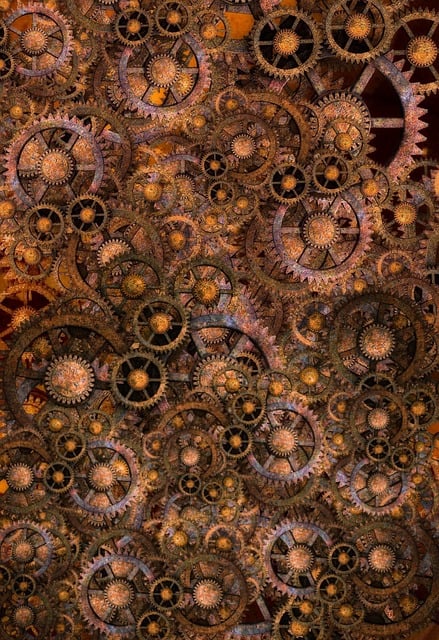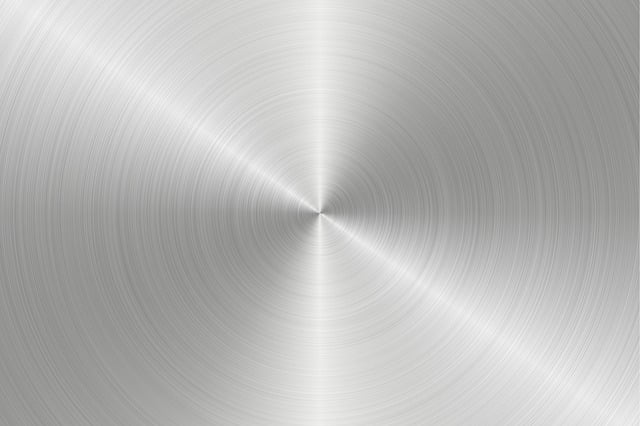In today’s fast-paced world where boundaries between disciplines are becoming increasingly blurred, a new trend is emerging that brings together two seemingly distinct fields – creative writing and industrial design. Through a unique fusion of artistry and technical expertise, these two disciplines are finding unexpected synergies, breathing new life into both industries. In this article, we will explore the fascinating intersection between creative writing and industrial design, uncovering the ways they complement and enhance each other, and how this innovative collaboration is shaping the future of both creative endeavors. So, whether you’re an aspiring writer or a design enthusiast, prepare to embark on a captivating journey where imagination and innovation merge to create remarkable works of art.
Contents
- The article “A Fusion of Art: Creative Writing and Industrial Design for Two” covers different aspects of combining creative writing and industrial design. Here are 8 consecutive headings that highlight specific aspects, provide detailed insights, and offer specific recommendations:
- The Power of Words and Form: Communicating through Design
- Melding Imagination and Function: Designing with Purpose
- 1. Exploring the Intersection: Unleashing the Synergy between Creative Writing and Industrial Design
- 2. The Art of Storytelling through Design: How Creative Writing Enhances Industrial Design Solutions
- The Power of Creative Writing in Industrial Design
- 3. Design Narratives: Incorporating Creative Writing Techniques for Compelling Product Concepts
- 4. Crafting Identity: Leveraging Creative Writing to Add Depth to Industrial Design Projects
- 5. Beyond Aesthetics: How Industrial Design Can Complement Narrative-driven Writing
- 6. Literary Design Thinking: Using Creative Writing Principles to Inspire Industrial Design Innovation
- 7. Enhancing User Experience: Intertwining Creative Writing and Industrial Design to Create Meaningful Products
- 8. Collaborative Potential: Encouraging Cross-disciplinary Projects for Artistic Innovation in Creative Writing and Industrial Design
- Frequently Asked Questions
- Concluding Remarks
The article “A Fusion of Art: Creative Writing and Industrial Design for Two” covers different aspects of combining creative writing and industrial design. Here are 8 consecutive headings that highlight specific aspects, provide detailed insights, and offer specific recommendations:
The Power of Words and Form: Communicating through Design
The seamless integration of creative writing and industrial design presents a remarkable opportunity to convey powerful messages and evoke emotions through visually captivating products. By bringing together the art of storytelling with the functionality of design, innovative concepts can emerge, capturing the essence of narratives and translating them into tangible forms. For instance, an industrial designer can draw inspiration from a story’s characters or themes and create aesthetically pleasing and functional objects that embody the intended emotions. This fusion enables designers to go beyond the traditional notions of functionality and aesthetics, pushing the boundaries of how we perceive and interact with the world around us.
Recommendations:
- Experiment with incorporating text or handwritten excerpts into the design itself, subtly yet powerfully weaving the narrative into the product.
- Collaborate with writers during the design process to ensure a harmonious blending of form and content, transforming the product into a true storytelling tool.
- Aim for a balance between subtlety and explicitness, allowing the design to spark curiosity and create a sense of intrigue that invites the user to explore the story further.
Melding Imagination and Function: Designing with Purpose
In the realm of creative writing and industrial design fusion, the importance of purposeful design cannot be overstated. While aesthetics play a significant role, it is essential to remember that the ultimate goal of a product is to serve its users. By approaching design processes with a narrative-driven mindset, industrial designers can ensure that their creations not only captivate visually but also fulfill practical needs. This incorporation of creative writing elements helps reshape the design landscape, encouraging designers to think deeply about the purpose behind their creations and how they can enhance the overall user experience.
Recommendations:
- Immerse yourself in the story you aim to communicate through design, understanding its nuances and distinctive traits to inform your design decisions.
- Embrace user-centered design methodologies to ensure that the product’s functionality aligns seamlessly with its aesthetic appeal.
- Consider the emotional journey users may experience when interacting with the product, aiming to elicit the intended response through thoughtful design choices.
1. Exploring the Intersection: Unleashing the Synergy between Creative Writing and Industrial Design
In today’s world, the boundaries between different creative disciplines are becoming increasingly blurred, and this is exactly where the magic happens! The intersection between creative writing and industrial design offers a unique opportunity to unleash an incredible synergy that can revolutionize both fields.
When we think of creative writing, we often envision captivating stories, rich characters, and vivid imagery. On the other hand, industrial design focuses on creating functional and aesthetically pleasing products that enhance our daily lives. By merging these two worlds, we can tap into the power of storytelling to breathe life into design, making it more relatable and meaningful to users.
- Story-driven designs: Incorporating narratives into product design can provide a deeper connection between the user and the object. By embedding stories within the design process, designers can create products that evoke emotions and engage users on a more profound level.
- Imaginative concepts: By drawing inspiration from creative writing techniques such as world-building and character development, industrial designers can push the boundaries of their imagination. This can result in bold and innovative designs that challenge the status quo and bring new perspectives to the table.
- Evocative user experiences: The marriage of creative writing and industrial design can create immersive experiences that transport users to entirely different worlds. By combining elements of storytelling with functional design, products can provide users with a sense of escape and create unforgettable memories.
The potential for collaboration between creative writers and industrial designers is immense. It opens up exciting possibilities for both disciplines to learn from one another, pushing the boundaries of what is possible. By exploring the intersection of creative writing and industrial design, we can forge new paths, stimulating innovation, and ultimately creating a more meaningful and captivating world.
2. The Art of Storytelling through Design: How Creative Writing Enhances Industrial Design Solutions
The Power of Creative Writing in Industrial Design
In the world of industrial design, where functionality and aesthetics seamlessly blend, mastering the art of storytelling through design can take your projects to new heights. Creative writing, often associated with literature or marketing, may not seem like an obvious tool for industrial designers, but it offers an untapped potential for enhancing design solutions.
Through creative writing, designers can bring their concepts to life by adding a narrative element that engages and captivates users. By crafting a compelling story around a product, designers can create an emotional connection, making the user’s experience unforgettable. Whether it’s the story behind the product’s development, the inspiration derived from a historical event, or a fictional scenario that showcases the product in action, storytelling can transform a simple object into an extraordinary experience.
- Emotional Appeal: Adding creative writing elements enables designers to tap into the emotional aspect of their audience. Aligning the design with a captivating story helps trigger powerful and memorable feelings.
- User Experience: Creative writing allows designers to envision how users will interact with their products in various scenarios, ultimately enhancing the user experience and shaping the design around these insights.
- Brand Differentiation: Storytelling through design provides an opportunity for brands to stand out in a crowded marketplace. By sharing unique narratives, designers can create a distinct identity that sets their products apart.
3. Design Narratives: Incorporating Creative Writing Techniques for Compelling Product Concepts
In the world of product design, creativity is the driving force behind compelling concepts that capture people’s attention. Design narratives offer a unique approach by incorporating creative writing techniques to enhance the overall product concept. By infusing elements of storytelling, characters, and emotions into the design process, product designers can create more engaging and memorable experiences for their users.
One way to incorporate creative writing techniques is by developing a strong narrative arc for the product concept. This involves creating a captivating story that takes users on a journey, from the initial problem or need to the ultimate resolution provided by the product. By carefully crafting the plot, designers can create a sense of anticipation and curiosity that keeps users hooked. Additionally, integrating well-developed characters into the narrative adds depth and relatability to the product concept. Users can connect with these characters on a personal level and imagine themselves using the product in their own lives.
Furthermore, leveraging emotions is another powerful tool in design narratives. Products that evoke specific emotions, whether it’s excitement, nostalgia, or empathy, are more likely to resonate with users on a deep level. Utilizing creative writing techniques such as vivid descriptions and sensory imagery can help designers evoke these emotions and immerse users in the product experience. By tapping into users’ emotional responses, designers can create lasting impressions and establish a stronger connection between the user and the product.
Incorporating creative writing techniques into product design not only enhances the overall concept but also allows designers to communicate the product’s value and purpose more effectively. By crafting compelling narratives, designers can capture users’ attention, spark their imagination, and ultimately create products that leave a lasting impact. So, next time you embark on a product design journey, consider infusing your creations with the power of storytelling – you might just unlock a world of endless possibilities!
4. Crafting Identity: Leveraging Creative Writing to Add Depth to Industrial Design Projects
In the realm of industrial design, where functionality and aesthetics are crucial, there is a growing recognition of the role that storytelling and creative writing can play in elevating the impact of a project. By harnessing the power of narrative, designers can weave a compelling story around their creations, giving them an identity that goes beyond their physical appearance.
One way to leverage creative writing in industrial design is by developing personas for the intended users or consumers of the product. These personas breathe life into the design process, helping designers empathize with the needs, desires, and pain points of different individuals. By crafting detailed narratives around these personas, designers can better understand how their creations fit into the users’ lives, enabling them to make more informed design decisions. This process can encourage innovation, inspire creativity, and ultimately result in designs that are not only visually stunning but also deeply resonant with their intended audience.
Furthermore, creative writing can also be employed to create a brand story around an industrial design project. Just as companies establish a brand identity through storytelling, the same principle can be applied to design. By crafting a narrative that encapsulates the values, mission, and vision behind the product, designers can give their creations a strong identity that connects with consumers on an emotional level. This storytelling approach can be enhanced through the use of impactful language, evocative imagery, and memorable taglines, all of which help to create a lasting impression in the minds of consumers.
In conclusion, incorporating creative writing into industrial design projects can add an unexpected layer of depth and meaning to the final creations. By employing personas and crafting compelling brand stories, designers can create designs that not only look visually striking but also resonate with users on a profound level. This fusion of creativity and functionality opens up new possibilities for pushing the boundaries of industrial design, ensuring that the products of tomorrow leave an indelible mark on the world.
5. Beyond Aesthetics: How Industrial Design Can Complement Narrative-driven Writing
In the realm of narrative-driven writing, where the power of storytelling reigns supreme, we often overlook the importance of industrial design in enhancing the overall experience. Industrial design goes beyond mere aesthetics; it has the potential to seamlessly complement and elevate the narrative, creating a truly immersive and captivating world for readers. Let’s explore how industrial design can play a critical role in the storytelling process:
User-Centric Design: Industrial design can be thought of as the bridge that connects the reader to the narrative world. By incorporating user-centric design principles, authors can create tangible and relatable artifacts within their stories. Whether it’s an intricately designed steampunk gadget or a futuristic virtual reality device, these thoughtfully crafted objects can cultivate a deeper emotional connection between readers and the story’s characters and settings.
- Sensory immersion: As readers, we often use our senses to fully immerse ourselves in a story. By considering industrial design, authors can incorporate elements that engage multiple senses simultaneously. Be it the tactile feel of a worn leather journal or the aroma of a freshly brewed potion, these small details can transport readers from the realm of imagination to an almost tangible reality.
- World-building: Industrial design plays a crucial role in world-building, shaping the aesthetics and functionality of a narrative universe. By presenting readers with unique and visually striking designs, authors can create distinct atmospheres and cultures that enhance the narrative’s believability. From the sleek, minimalist technology in a dystopian future to the ornate, lavish furniture in a medieval castle, industrial design breathes life into the author’s imagination.
- Evolving narratives: Just as technological advancements reshape our world, industrial design can signify the passage of time and the evolution of a narrative. Through the deliberate alteration of design elements, authors can convey the progress of a society, the development of characters, and the transformation of relationships. From the traditional to the modern, the obsolete to the cutting-edge, these design alterations subtly guide readers through the story’s ever-changing landscape.
In conclusion, the integration of industrial design with narrative-driven writing opens up a realm of possibilities for authors. Through user-centric design principles, sensory immersion, world-building, and evolving narratives, the power of storytelling can be elevated to new heights. So, writers, don’t underestimate the influence of industrial design on your narratives – it’s time to unveil a world that engages not only the mind but also the senses of your readers.
6. Literary Design Thinking: Using Creative Writing Principles to Inspire Industrial Design Innovation
In the realm of industrial design, creativity and innovation are key elements for success. However, finding unique and groundbreaking ideas can sometimes be a challenge. This is where literary design thinking comes into play. By leveraging principles from creative writing, designers can tap into a deep well of inspiration and bring a fresh perspective to their work.
Exploring Characters: Just like in a gripping novel, every product or design has a story to tell. By approaching industrial design from a literary standpoint, designers can delve into the essence of their creations and give them a compelling narrative. This helps not only in visually representing the product but also in communicating its purpose and value to users.
Building Emotional Connections: Literary design thinking encourages designers to focus on creating emotional connections with users. By infusing a design with elements that evoke feelings and emotions, whether it’s nostalgia, excitement, or comfort, the resulting product becomes more than just a functional object. It becomes a meaningful experience that resonates with its users on a deeper level.
7. Enhancing User Experience: Intertwining Creative Writing and Industrial Design to Create Meaningful Products
In today’s highly competitive market, simply providing functional products and services is not enough. Companies are now focusing on enhancing user experience to create meaningful connections with their consumers. One innovative way to achieve this is by intertwining creative writing and industrial design.
Creative writing plays a significant role in setting the tone and narrative of a product. By crafting compelling stories, brands can effectively communicate their vision and values, captivating the users’ attention. Through the use of vivid descriptions, metaphors, and storytelling techniques, creative writing adds depth and emotion to industrial design, making products more relatable and impactful.
Moreover, industrial design is responsible for creating the physical form, functionality, and aesthetics of a product. By incorporating creative writing into the design process, designers can go beyond the visual appeal and focus on creating products that evoke specific emotions or experiences. This integration enables the development of user-centric designs that carefully consider how each element, from color choices to material selection, contributes to the overall user experience.
To successfully intertwine creative writing and industrial design, companies can follow these key strategies:
1. Story-driven design: Craft a narrative that aligns with the brand’s values and resonates with the target audience. Use storytelling techniques to create an emotional connection with users, reinforcing brand loyalty.
2. User-centered approach: Understand the needs and desires of the users and integrate them into the design process. By empathizing with the end-users, designers can create products that genuinely enhance their experience.
3. Consistency across channels: Ensure the brand story remains consistent across various touchpoints, including packaging, advertisements, and digital platforms. This consistency reinforces the overall user experience and strengthens the brand identity.
By embracing the power of intertwining creative writing and industrial design, companies can develop meaningful products that not only meet users’ needs but also create lasting impressions. Combining the art of storytelling with the science of design, brands can elevate the user experience to new heights, leaving a lasting impact on their consumers.
8. Collaborative Potential: Encouraging Cross-disciplinary Projects for Artistic Innovation in Creative Writing and Industrial Design
When it comes to artistic innovation, the potential for collaboration between creative writing and industrial design is truly exciting. These seemingly unrelated fields have the power to come together and produce groundbreaking works that push the boundaries of their respective disciplines. By encouraging cross-disciplinary projects, we can unlock new perspectives, merge imaginative storytelling with tangible design elements, and create unparalleled artistic experiences.
1. Expanding Narrative Horizons: Collaborating between creative writing and industrial design allows for the development of immersive narratives that go beyond the written word. Think of a novel brought to life through immersive installations, where readers can physically step into the world of the story. The combination of compelling storytelling and innovative design elements enhances the overall experience, transporting the audience into a multi-dimensional realm.
2. Blurring Boundaries: Interdisciplinary collaboration challenges traditional notions of artistic expression. When writers and designers come together, they can explore unconventional approaches to storytelling, such as incorporating written narratives into product designs or using typography as a visual language. This blend of techniques creates a synergy that blurs the boundaries between the written word and physical form, sparking fresh ideas and pushing the envelope of what is possible.
Frequently Asked Questions
Q: What is the concept behind “A Fusion of Art: Creative Writing and Industrial Design for Two”?
A: The concept revolves around combining the creative aspects of writing with the practical applications of industrial design, creating a unique blend of art forms.
Q: How does this fusion work?
A: This fusion brings together the imaginative storytelling and thought-provoking narratives of creative writing with the functionality and aesthetics of industrial design. It aims to create products that not only serve a purpose but also evoke emotions and tell stories.
Q: What are the benefits of integrating creative writing into industrial design?
A: By integrating creative writing, industrial designers can add depth and meaning to their products. It allows designers to communicate messages, narratives, or themes through their creations, enhancing the user experience and forging stronger emotional connections with consumers.
Q: Can you provide an example of this fusion in action?
A: Certainly! Imagine a beautifully designed chair that incorporates elements from a fictional story. The chair’s unique shape, materials, and colors are carefully chosen to represent the concepts and emotions conveyed in the story, making the piece more than just a functional item but also a piece of art that tells a story.
Q: How does this fusion benefit the creative writing field?
A: The fusion of creative writing and industrial design offers new avenues for writers to express their storytelling abilities. By collaborating with designers, writers can see their narratives come to life in tangible forms, reaching a wider audience and engaging people in entirely new ways.
Q: Are there any challenges in merging these two art forms?
A: Yes, there can be challenges in finding the balance between functionality and artistic expression. Ensuring that the practical aspects of industrial design are not compromised while still conveying the intended story or emotion requires a careful and collaborative effort between writers and designers.
Q: How can this fusion impact the future of design?
A: This fusion has the potential to revolutionize the design industry by pushing the boundaries of traditional design principles. It opens up a world of possibilities, enabling designers to embrace storytelling as an integral part of their process and creating products that are not only visually appealing but also emotionally captivating.
Q: Can anyone participate in this fusion of art?
A: Absolutely! Whether you are a writer looking to collaborate with designers or an industrial designer interested in integrating creative writing into your work, this fusion welcomes anyone with a passion for art and storytelling.
Q: Where can we find more information about “A Fusion of Art: Creative Writing and Industrial Design for Two”?
A: For more information, keep an eye out for articles, exhibitions, or workshops that discuss or showcase this fusion. Additionally, following industry professionals, attending design conferences, or exploring online communities focused on art and design can provide further insights and inspiration.
Concluding Remarks
In conclusion, the fusion of creative writing and industrial design holds enormous potential for innovation and exploration in both fields, offering a unique blend of imagination and practicality. This collaboration can inspire new ideas, reshape narratives, and redefine the boundaries of artistic expression. With this partnership, the worlds of art and design can create a harmonious and dynamic balance, resulting in astounding works that captivate and inspire.








